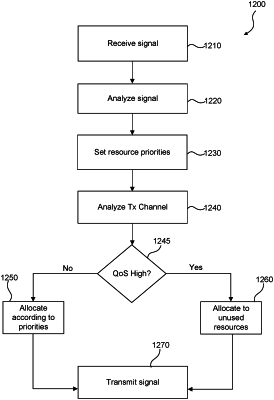| CPC H04L 5/0064 (2013.01) [H04L 1/1678 (2013.01); H04L 5/0055 (2013.01); H04L 2001/0093 (2013.01)] | 18 Claims |

|
1. A wireless communication device, comprising:
a memory that stores a group ID of the wireless communication device;
radio front end circuitry configured to receive a first broadcast signal;
one or more processors configured to:
determine, based on the first broadcast signal, time slots previously-used by other devices having a same group ID as the wireless communication device;
set the previously-used time slots to have a lower selection priority;
identify retransmission resources from the first broadcast signal;
set the identified retransmission resources to have a higher selection priority;
allocate time slots for signal transmission based on the previously-used time slots and their respective selection priority, wherein the allocation is further based on a quality of service metric; and
cause the radio front end circuitry to transmit a second signal using the allocated time slots.
|